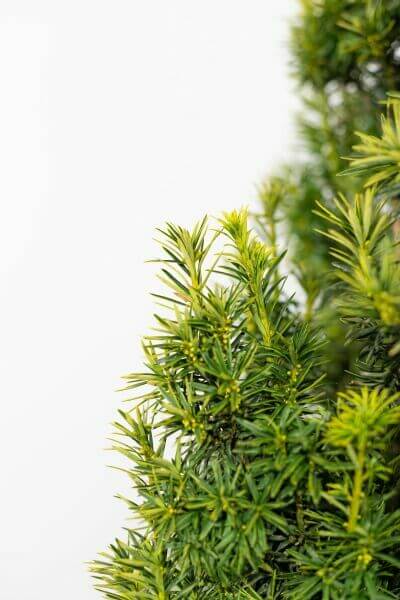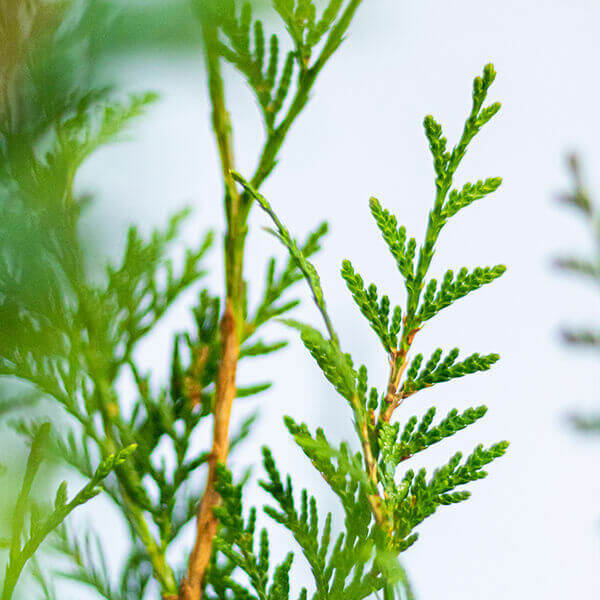Compact Hedge Plants For Urban Gardens
Compact Hedge Plants For Urban Gardens
Blog Article
Best Hedging Plants For Boundary Marking
Enhance your garden's appeal with rich hedge varieties such as Yew (Taxus), Thuja, Laurel, Photinia, and Bamboo, commemorated for their structural stability and environmental advantages.
Yew and Thuja provide evergreen coverage and winter season resilience, while Laurel offers fast growth and broad, fragrant leaves.
Photinia includes seasonal charm with its lively red foliage, and Bamboo provides a low-maintenance, serene atmosphere.
These hedges enhance air quality, decrease sound, and create tranquil, personal areas.
Proper planting, spacing, and upkeep guarantee energetic development and environmental consistency.
Explore how these rich ranges can raise your garden's beauty and wellness.
Key Takeaways
Transform Your Garden With Lush Hedge Varieties
- Select Yew for its thick, evergreen development and unrivaled longevity.
- Opt for Laurel for its fast growth and broad leaves, making sure quick personal privacy.
- Choose Photinia for its vibrant seasonal foliage, which turns a striking dark red.
- Use Bamboo for a low-maintenance, winter-hardy hedge with visual appeal.
- Area plants 2-3 per meter and prune frequently for optimal growth and health.
Popular Hedge Plants
When transforming a garden with rich hedge ranges, it's vital to think about popular hedge plants such as Yew, Thuja, Laurel, and Photinia due to their special characteristics and benefits.
Yew (Taxus) is extremely respected for its durability and dense, green growth, making it a prime choice for withstanding landscapes.
Thuja is noted for its evergreen foliage and robust winter resilience.
Photinia adds seasonal vibrancy with red leaves that darken gradually, producing dynamic visual appeal.
Laurel provides rapid growth and aromatic, broad leaves, perfect for fast personal privacy.
Furthermore, Bamboo is an exceptional option for ambiance, offering a low-maintenance, winter-hardy option that boosts the garden's visual with its stylish, swaying canes.
These selections accommodate a variety of horticultural requirements and preferences.
Benefits of Garden Hedges
Garden hedges use a wide variety of benefits, making them an important addition to any landscape. These natural barriers are cost-effective to carry out and offer considerable wind protection, boosting air flow and contributing to sound reduction. The dense foliage of hedges like Thuja and Beech makes sure privacy by blocking exposure, developing a peaceful and secluded environment.
Hedges likewise play an essential function in microclimate policy, supplying a stable environment that promotes plant development and reduces temperature level fluctuations. Their intricate leaf structures filter contaminants, enhancing air quality and contributing to a much healthier garden environment.
Furthermore, hedges master noise reduction, soaking up and deflecting sound waves to lower ambient sound levels. This double functionality of offering both acoustic and visual privacy improves the general harmony and visual appeal of any garden.
Planting and Maintenance Tips
For a successful hedge, precise preparation of the planting location is crucial. Guarantee the soil has correct pH and drain to support strong root development.
Space the plants appropriately for the selected types. Water the hedge regularly throughout its initial growth stage, adjusting as needed with seasonal changes.
Execute a methodical insect control and illness avoidance method, utilizing chemical or natural treatments when essential. Frequently check for aphids, termites, and fungal infections.
Apply mulch to maintain wetness and reduce weeds. Seasonal pruning promotes thick growth and air flow, necessary for plant health.
Following these standards will assist you cultivate a dynamic, well-kept hedge that enhances the beauty of your garden.
Spacing and Cutting Standards
Spacing and Cutting Standards
Appropriate spacing and trimming are crucial for cultivating healthy, aesthetically appealing hedges. Appropriate spacing guarantees each plant receives sufficient nutrients, light, and air flow.
Follow these guidelines for optimum hedge upkeep:
- Spacing: Position hedge plants 2-3 plants per meter to encourage robust growth.
- Pruning Strategies: Regular pruning is essential for keeping preferred hedge height and shape. Trim brand-new development in summer and cut down older wood throughout winter.
- Seasonal Care: Change trimming techniques and schedules according to seasonal requirements to guarantee plant health.
- Hedge Height: Frequently screen and trim to keep the desired hedge height and attain uniform aesthetics.
Adhering to these actions will ensure your hedge prospers, enhancing both the appeal and performance of your garden.
Picking the Right Hedge
Selecting the Right Hedge
Picking the appropriate hedge includes examining factors such as fully grown height, foliage density, and environmental durability. Effective hedge plant choice requires comprehending each types' growth qualities and site-specific flexibility.
For instance, Yew (Taxus) offers excellent longevity and thick growth, while Thuja is notable for its winter durability. In addition, considering upkeep requirements is vital; fast-growing types like Laurel or Privet demand routine trimming, whereas low-maintenance choices like Bamboo or Ivy may be more effective for those seeking minimal maintenance.
Environmental factors such as soil type, light accessibility, and moisture conditions must also guide the selection procedure. This mindful technique makes sure the picked hedges will grow, supplying both aesthetic and functional advantages to the garden landscape.
Shipment and Planting Advice
To guarantee your hedge plants grow, they need to be provided by specialized carriers and planted immediately upon arrival.
Follow these vital steps for successful planting:
- Soil Preparation: Enrich the soil with raw material to enhance drainage and nutrient content.
- Planting Depth: Develop a trench two times the width and equal to the depth of the root ball.
- Watering Techniques: Water thoroughly after planting, keeping the soil regularly damp but not filled.
- Mulching: Use a layer of mulch to retain wetness and reduce weeds.
Customer Support and Service
Offered the important role of prompt support in horticultural pursuits, our customer assistance team is readily available 6 days a week through telephone, e-mail, and social media to offer skilled guidance and swiftly attend to any concerns. Their devotion to quick action times guarantees client complete satisfaction by resolving questions connected to plant health, ideal planting techniques, and maintenance schedules.

-------------------
6 days a week
This extensive support group, enhanced by an outstanding 9.3/ 10 customer ranking, highlights our commitment to enhancing the gardening experience for every single client.
Frequently Asked Concerns
For How Long Does It Consider Hedge Plants to Establish?
Hedge plants usually require one to 3 years to become totally established, with the specific period varying by species and growing conditions.
Effective care during this important period is necessary for robust growth. Constant watering, vigilant weed control, and suitable fertilizer application are essential in promoting strong root development.
For instance, fast-growing types like Laurel may develop faster, while slower-growing varieties such as Yew might take longer. Thorough upkeep accelerates the establishment process, leading to dense and healthy hedges.
What Are the Finest Hedge Plants for Privacy?
The question of the finest hedge plants for personal privacy includes evaluating evergreen and deciduous alternatives.
Evergreen hedges like Thuja, Laurel, and Cypress provide year-round coverage, guaranteeing constant personal privacy.
In contrast, deciduous hedges such as Beech offer seasonal privacy, shedding leaves in chillier months.
Secret upkeep pointers for personal privacy hedges consist of routine trimming, fertilizing in spring, and proper spacing-- usually 2 to 3 plants per meter.
Additionally, consistent watering and diligent weed elimination are important for promoting healthy, thick development.
Can Hedge Plants Draw In Wildlife to My Garden?
Yes, hedge plants can bring in hedge plants wildlife to your garden by supplying necessary advantages like shelter, food, and nesting sites, consequently improving local biodiversity. Yew, holly, and laurel are outstanding for drawing in birds, while ivy supports a variety of pests.
Nevertheless, it is very important to keep in mind that there are some disadvantages, such as increased maintenance to handle pests and routine maintenance. Carefully selecting and maintaining hedge ranges can assist balance these drawbacks and advantages, eventually promoting a vibrant and sustainable community in your garden.
Are There Any Blooming Hedge Plants Available?
Yes, there are flowering hedge plants offered that can enhance the appeal of your garden.
For example, Elaeagnus, also understood as Olive Willow, produces fragrant white flowers in the fall, including a touch of beauty.
Photinia, another popular choice, showcases lively red leaves that develop into a rich green, developing a dynamic visual result throughout the seasons.
To make sure these plants flourish, it's necessary to practice appropriate pruning strategies and seasonal maintenance, such as cutting new development in the summer and cutting down in the winter.
These steps will assist maintain the health and visual appeal of your blooming hedges.
How Do I Prevent Insects in My Hedge Plants?
To avoid pests in hedge plants, utilize natural bug control methods and preserve correct hedge care. Introduce useful pests like ladybugs, which prey on hazardous pests, to produce a well balanced ecosystem.
Frequently inspect your hedges for signs of infestation and promptly eliminate any afflicted parts to avoid the spread. Make sure the health of your hedges by using well balanced fertilizers and providing adequate water.
Make use of mulching to retain soil wetness and correct spacing to reduce plant stress and promote robust growth. These practices collectively help in lessening pest concerns and keeping a healthy hedge.
Conclusion
In essence, picking the ideal hedge ranges such as Yew, Thuja, and Laurel can change any garden into a peaceful haven. These plants offer year-round plant, boost visual appeal, and deal useful benefits like noise reduction and wind protection.
Proper planting techniques, accurate spacing, constant watering, and seasonal cutting are crucial for ideal growth.
Trusted delivery services and skilled customer assistance guarantee a smooth experience from purchase to planting, making it easier than ever to raise your outdoor area.
Garden hedges use a wide range of advantages, making them an important addition to any landscape. These natural barriers are economical to implement and supply considerable wind protection, boosting air flow and contributing to noise decrease. The dense foliage of hedges like Thuja and Beech makes sure privacy by blocking visibility, developing a remote and serene environment.

Pruning Methods: Regular pruning is important for preserving desired hedge height and shape. Trim brand-new development in summertime and cut back older wood during winter.
Report this page